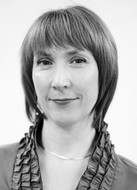Mobilizing general cultural resource of academic physical education for progress in self-learning
Фотографии:
ˑ:
PhD, Associate Professor A.A. Gladysheva1
A.A. Gladyshev1
E.V. Pilyugina1
1Novosibirsk State Agricultural University, Novosibirsk
Objective of the study was to improve students’ self-learning by mobilizing the general cultural resource of the academic physical education curriculum. The study was performed at Novosibirsk Agricultural University (2016-2018); Nizhnevartovsk State University (2012-2014); Irkutsk National Technical Research University; and Siberian State Transport University. We applied a set of theoretical knowledge tests to rate the students’ ability to apply the most relevant data collection and generalizing methods and tools; interpret the data and make findings; answer different questions; summarize the data and make conclusions; and self-rate their progress. We also applied a set of practical tests to rate students’ knowledge of the modern physical education terminology, methods, tools and healthy lifestyles; their ability to analyze available information and make adjustments to effectively manage the training process. Based on the study data, we offered a frame physical education course to secure a better progress in elective academic disciplines.
Keywords: physical education, federal state educational standard, general cultural competence, universal competence.
References
- Lubysheva L.I., Zagrevskaya A.I., Peredelskiy A.A. et al. Sportizatsiya v sisteme fizicheskogo vospitaniya: ot nauchnoy idei k innovatsionnoy praktike [Sportization in physical education system: from scientific idea to innovative practice]. Moscow: Teoriya i praktika fizicheskoy kultury i sporta publ., 2017, 200 p.
- Manzheley I.V., Chernyakova S.N. Formirovanie fizkulturnykh kompetentsiy u bakalavrov v obrazovatelnoy srede vuza [Building physical education competences in bachelors in academic educational environment]. Vestnik Tyumenskogo gosudarstvennogo universiteta. Pedagogika. Psikhologiya, 2014, no. 9, pp. 78-91.




 Журнал "THEORY AND PRACTICE
Журнал "THEORY AND PRACTICE